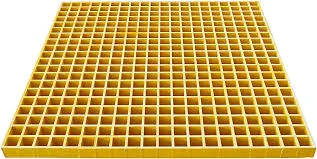
-
 Afrikaans
Afrikaans -
 Albanian
Albanian -
 Amharic
Amharic -
 Arabic
Arabic -
 Armenian
Armenian -
 Azerbaijani
Azerbaijani -
 Basque
Basque -
 Belarusian
Belarusian -
 Bengali
Bengali -
 Bosnian
Bosnian -
 Bulgarian
Bulgarian -
 Catalan
Catalan -
 Cebuano
Cebuano -
 China
China -
 China (Taiwan)
China (Taiwan) -
 Corsican
Corsican -
 Croatian
Croatian -
 Czech
Czech -
 Danish
Danish -
 Dutch
Dutch -
 English
English -
 Esperanto
Esperanto -
 Estonian
Estonian -
 Finnish
Finnish -
 French
French -
 Frisian
Frisian -
 Galician
Galician -
 Georgian
Georgian -
 German
German -
 Greek
Greek -
 Gujarati
Gujarati -
 Haitian Creole
Haitian Creole -
 hausa
hausa -
 hawaiian
hawaiian -
 Hebrew
Hebrew -
 Hindi
Hindi -
 Miao
Miao -
 Hungarian
Hungarian -
 Icelandic
Icelandic -
 igbo
igbo -
 Indonesian
Indonesian -
 irish
irish -
 Italian
Italian -
 Japanese
Japanese -
 Javanese
Javanese -
 Kannada
Kannada -
 kazakh
kazakh -
 Khmer
Khmer -
 Rwandese
Rwandese -
 Korean
Korean -
 Kurdish
Kurdish -
 Kyrgyz
Kyrgyz -
 Lao
Lao -
 Latin
Latin -
 Latvian
Latvian -
 Lithuanian
Lithuanian -
 Luxembourgish
Luxembourgish -
 Macedonian
Macedonian -
 Malgashi
Malgashi -
 Malay
Malay -
 Malayalam
Malayalam -
 Maltese
Maltese -
 Maori
Maori -
 Marathi
Marathi -
 Mongolian
Mongolian -
 Myanmar
Myanmar -
 Nepali
Nepali -
 Norwegian
Norwegian -
 Norwegian
Norwegian -
 Occitan
Occitan -
 Pashto
Pashto -
 Persian
Persian -
 Polish
Polish -
 Portuguese
Portuguese -
 Punjabi
Punjabi -
 Romanian
Romanian -
 Russian
Russian -
 Samoan
Samoan -
 Scottish Gaelic
Scottish Gaelic -
 Serbian
Serbian -
 Sesotho
Sesotho -
 Shona
Shona -
 Sindhi
Sindhi -
 Sinhala
Sinhala -
 Slovak
Slovak -
 Slovenian
Slovenian -
 Somali
Somali -
 Spanish
Spanish -
 Sundanese
Sundanese -
 Swahili
Swahili -
 Swedish
Swedish -
 Tagalog
Tagalog -
 Tajik
Tajik -
 Tamil
Tamil -
 Tatar
Tatar -
 Telugu
Telugu -
 Thai
Thai -
 Turkish
Turkish -
 Turkmen
Turkmen -
 Ukrainian
Ukrainian -
 Urdu
Urdu -
 Uighur
Uighur -
 Uzbek
Uzbek -
 Vietnamese
Vietnamese -
 Welsh
Welsh -
 Bantu
Bantu -
 Yiddish
Yiddish -
 Yoruba
Yoruba -
 Zulu
Zulu
frp walkway
The Importance of FRP Walkways in Modern Infrastructure
In today's rapidly evolving construction landscape, the use of advanced materials is becoming increasingly essential. One such innovation is Fiber Reinforced Polymer (FRP), a composite material that has gained significant traction in the design and construction of walkways. FRP walkways offer a variety of benefits that address the limitations of traditional materials like concrete and steel.
The Importance of FRP Walkways in Modern Infrastructure
Safety is another critical factor where FRP walkways excel. The material can be designed with a textured surface that provides excellent slip resistance, making it a safe option for areas prone to wet or icy conditions. This characteristic is especially crucial in settings such as industrial sites, marine environments, or any location where foot traffic is frequent. Additionally, the lightweight nature of FRP allows for easier handling and installation, significantly reducing labor costs and project timelines.
frp walkway

Moreover, FRP walkways are customizable. They can be manufactured in a variety of colors, sizes, and designs to fit specific project requirements. From pedestrian bridges that enhance the aesthetic appeal of parks to industrial walkways that meet stringent safety standards, the versatility of FRP allows it to cater to diverse applications. This adaptability not only meets the functional needs but also allows architects and designers the freedom to create visually appealing structures.
Another significant advantage of FRP walkways is their environmental impact. Many FRP materials are produced using recyclable fibers, which contributes to a reduction in the overall carbon footprint of construction projects. Furthermore, the long lifespan and low maintenance needs of FRP reduce the frequency of replacements, minimizing waste over time.
In conclusion, FRP walkways are paving the way for innovative solutions in modern infrastructure. With their excellent strength-to-weight ratio, corrosion resistance, slip resistance, and customizable options, they represent a significant advancement over traditional materials. As industries continue to seek sustainable and durable solutions, the adoption of FRP in walkway construction is likely to grow, transforming spaces into safer, more efficient environments. With a future that looks increasingly bright for composite materials, it is clear that FRP walkways are not just a trend but a critical component of contemporary construction practices.
Latest news
-
Exploring the Benefits of Top Hammer Drifter Rods for Enhanced Drilling PerformanceNewsJun.10,2025
-
High-Precision Fiberglass Winding Machine for GRP/FRP Pipe Production – Reliable & Efficient SolutionsNewsJun.10,2025
-
FRP Pipes & Fittings for Shipbuilding - Corrosion-Resistant & LightweightNewsJun.09,2025
-
Premium FRP Flooring Solutions Durable & Slip-ResistantNewsJun.09,2025
-
Premium Fiberglass Rectangular Tanks Durable & Lightweight SolutionNewsJun.09,2025
-
Tapered Drill String Design Guide Durable Performance & UsesNewsJun.09,2025









